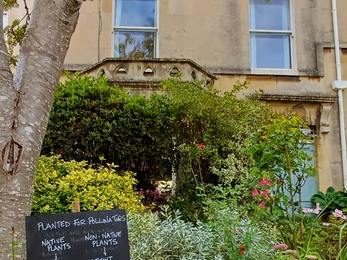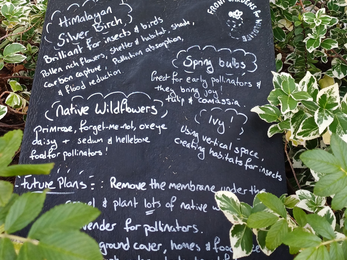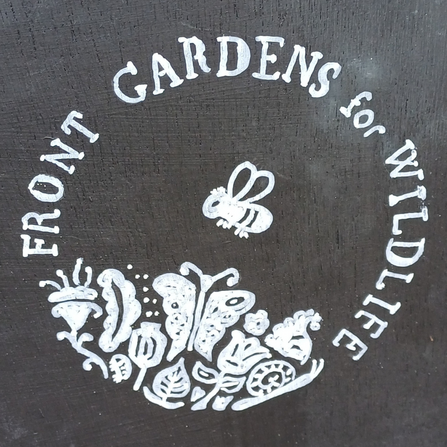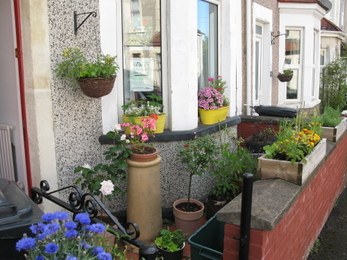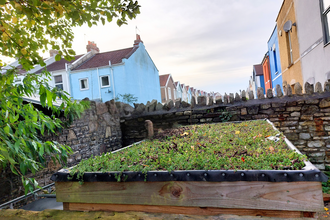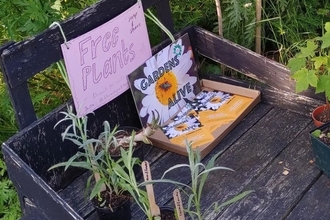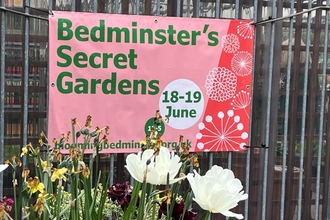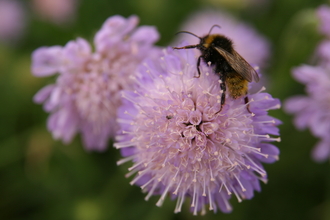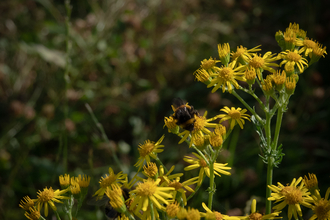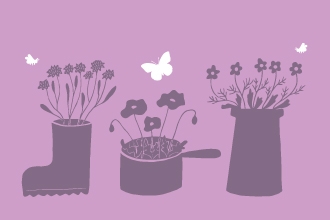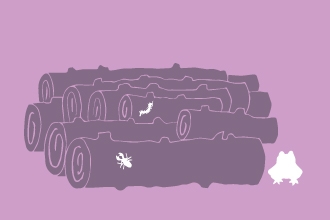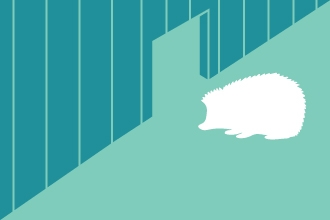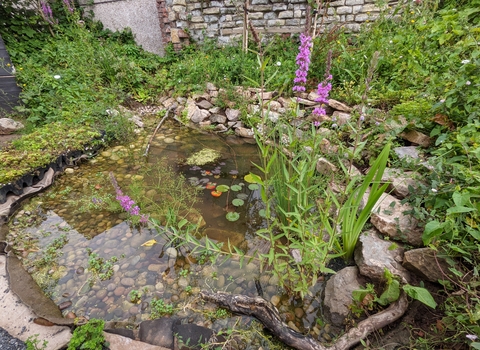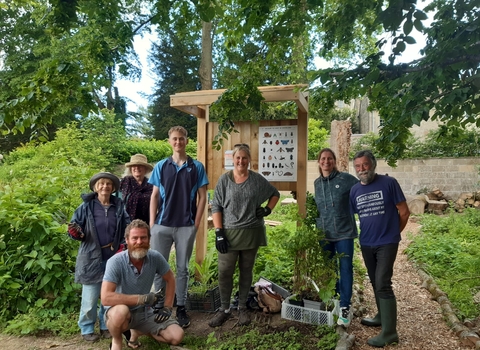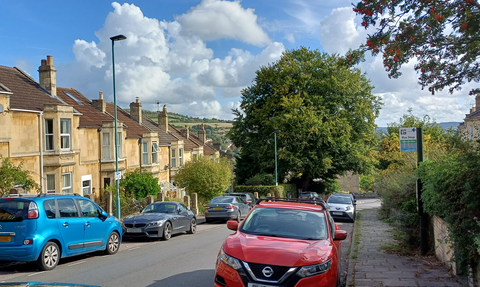
Sophie Bancroft
Transform your front garden
How one front garden created a greener community
Sarah wanted to make a difference for nature and had been working on the climate and nature crisis for many years. Everything lead back to doing something locally and building something with her local community. What if change could start with her won front garden - with soil, seeds and a sign?
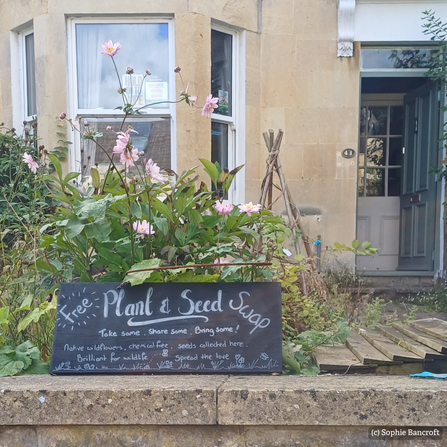
Sophie Bancroft
The decision to transform her front garden was clear and obvious, Sarah lives on a busy street in Bath . Sarah planted native plants, used organic principes and creating habitats for insects, birds and mammals. It was gardening with nature, not against it.
A sign was created to show what she was doing, in case her front garden looked ‘messy’ or different. This view and re-education is important – what is beauty and what make a tidy garden? The sign highlighted the small things Sarah had done to create habitat.
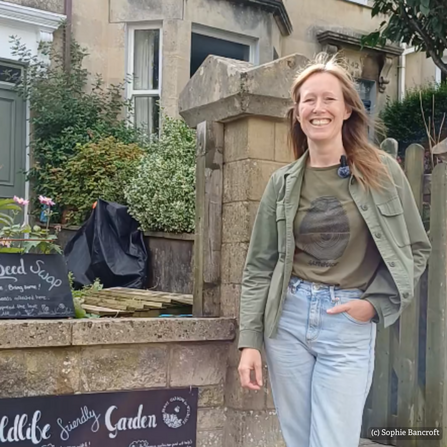
Sophie Bancroft
Connecting gardens and people in the street
Sarah also recognised that her garden alone would not make a huge difference to the nature and climate crisis. But a whole street of nature-friendly front gardens? That had power and potential. If everyone on her street did something for nature in their front garden – someone created a pond, others grew wildflowers, had native hedges, created habitats and homes for birds, bugs and hedgehogs, they could create a continuous habitat. An urban green corridor connecting wildlife across the neighbourhood.
Community and connectivity is key. By working together, supporting each other and making social connections – benefits and joy shared with local residents as well as wildlife.
Sarah set up Front Garden Awards on her street to recognise and reward neighbours who have taken action for nature in their front garden that supports local biodiversity, help create green corridors and inspire others to garden with nature in mind.
Why front gardens matter
Wildlife gardening in front gardens offers unique benefits - not just for nature, but for people too:
- Visibility: Neighbours and passers-by see realistic, relatable and achievable examples of wildlife gardening.
- Social: You are seen gardening, so people stop and chat. It encourages neighbourhood pride, strengthens community ties and encourages intergenerational learning.
- Educational: Blackboards are a talking point, something different, highlighting what people can do. It raises awareness about wildlife and climate issues, in a hyper-local way.
- Maximises space for green corridors: Front gardens are not used for recreation, are often an under-used space or are paved over for a driveway or with gravel.
- Environmental: It increases biodiversity, absorbs rainfall, improves air quality and helps cool urban areas (mitigates climate change).
- It shows what a front garden could be and should be! And also eases eco-anxiety.
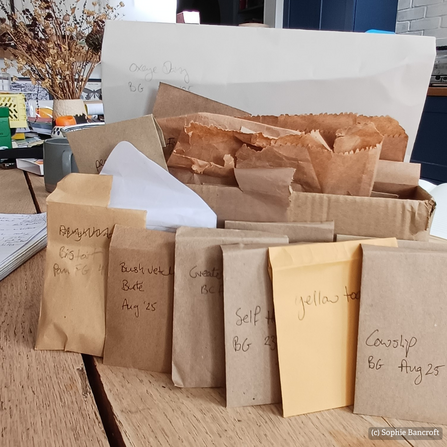
Sophie Bancroft
What are Front Garden Awards?
Front Garden Awards are a grassroots, community-led initiative to celebrate and encourage wildlife gardening in front gardens. They bring people together, help build social pride, create vital green corridors for wildlife and make our streets more resilient and beautiful.
Importantly, they’re designed to be inclusive, low-cost, and fun—about celebration, not competition.
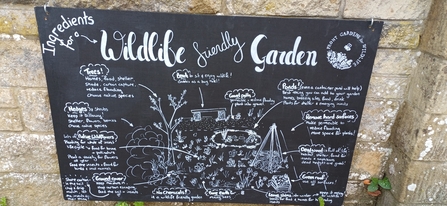
Sophie Bancroft
How to set up Front Garden Awards
- Set the tone to be inclusive and low-cost to participate, with a focus on education and celebration.
- Start conversations and spread the word. Make use of local contacts (street WhatsApp?) and local community groups that already exist, such as ‘Friends of’ groups, volunteer groups, recreation or church groups, local parish council etc.
- Make it visible. Are there local events or festivals taking place? Sarah took part in the ‘Larkhill festival’ which had a garden trail. This encouraged people to have blackboard signs in their gardens to encourage curiosity.
- Keep it simple. Sarah first ran her Front Garden Awards gorilla style, people didn’t enter. She awarded gardens with a home-made rosette and posted on social media.
- Get local support:
- Sarah had a visit from the Team Wilder Community Ecologist, who gave advice about wildlife gardening in the front gardens (see advice).
- Funding – Find a Funder shows local funding opportunities for community groups.
- What can people offer on your street: skills, seeds, tea, cake, encouragement!
People didn’t enter, I just selected gardens in the area and awarded them a rosette. To try and build conversation about gardening for wildlife and what we can all do, and highlight and celebrate people that are already doing it. The winners I’ve spoken to have all be so excited, and have definitely been talking about it.
ADVICE: Build a sense of shared purpose. Treat your street as a ‘Community Nature Reserve’. Not everyone needs the same features - variety creates resilience.
Dream big together: residents loved the idea of a shared fruit orchard on the street and to one day host an apple pressing or fruit crumble day. Yes!
What makes a wildlife friendly front garden?
Here are some wildlife friendly features that could earn a Front Garden Award:
- No chemicals or pesticides
- Wildflower patches in pots or beds
- Native hedges, dead hedges or climbing plants on fences or wall
- Bug hotels, log piles, bird boxes, hedgehog highways
- Berry bushes or small fruit trees (if there is space)
- Mini ponds or water features
- Replacing hard surfaces with permeable or green alternatives
Here are some more amazing front gardens for inspiration:
A front garden can spark a movement
Transforming our front gardens into nature-friendly spaces does more than make our streets more beautiful - it creates living, breathing networks of green corridors and community connection. These small patches of habitat support pollinators, birds, hedgehogs and countless other species that are struggling to find space in our urban environments.
Every garden matters. Every small action makes a big difference.
By viewing our neighbourhoods as part of a wider ‘Community Nature Reserve’, we can create a rich mosaic of connected habitats. Not every garden needs a pond or wildflower meadow, what matters is diversity, visibility and connection.
When Sarah made her front garden wildlife-friendly, she did something bold and took a risk: she made her values visible. That simple act, outside her home on a busy street in Bath, sparked conversations, inspired neighbours and planted the seeds to build something bigger.
What grew wasn’t just oxeye daisies or common knapweed – it was community and connections, where real change took root and something powerful was growing.
Resources
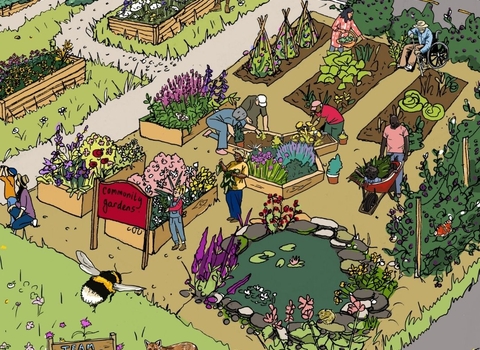
(C) Hannah Bunn
Be part of Team Wilder
All actions for nature collectively add up and creates life for people and wildlife.
Share your actions for nature to inspire and motivate others.
Talk about what you do to make these actions part of everyday life.
Share and tag us on @avonwt on social media as well.
Log your actions for nature on the map

